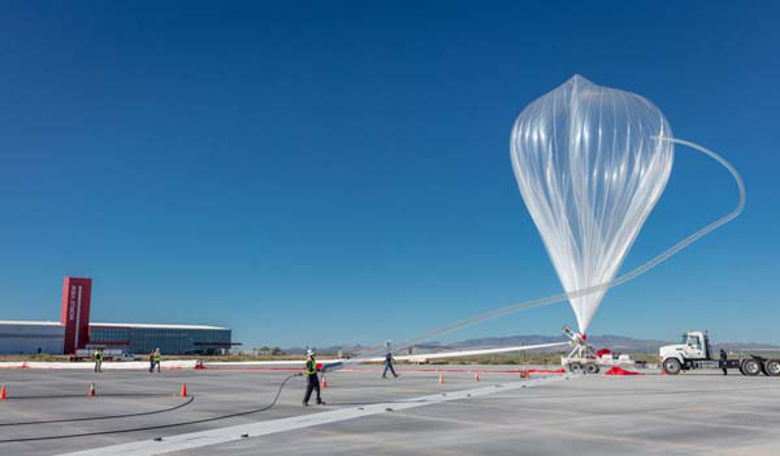World View launched its first Stratollite balloon from Spaceport Tucson this week, as the dedicated global hub for commerce and science in the stratosphere formally opened its doors to business.
“The FAA recently provided a Certificate of Authorization to World View to launch Stratollite missions from Spaceport Tucson. It features an immense launch pad measuring 700 feet in diameter – about the area of six football fields – and is ideal for launching high-altitude balloons. We salute Pima County, the city of Tucson and the State of Arizona for their vision in bringing this first commercial gateway to the stratosphere to life,” said Jane Poynter, founder and CEO of World View, which operates the facility on behalf of Pima County.
“It’s no-doubt destined to play an important role in attracting new commercial space business to Tucson and the southwestern U.S. We are proud to call Spaceport Tucson our home and primary launch site,” added Poynter.
This critical first mission from Spaceport Tucson will help World View lead the way in the emerging stratospheric economy by offering many of the benefits of geo-stationary satellites, low Earth orbit satellites, and high-altitude drones but at a fraction of the cost of those technologies.
The Stratollite is remotely managed, can be launched rapidly on demand and can carry a wide variety of commercial payloads. Once deployed it can keep persistent flight over areas of interest for months at a time and can safely return payloads back to earth after the mission has completed.
World View is not just limiting its Stratollite to commercial purposes but is also in the market to offer human spaceflight. Currently under development, its Voyager human spaceflight experience is aiming to launch in the near future and once operational it will offer private citizens a perspective-changing voyage to the threshold of space via high-altitude balloon.
With no special training required, passengers will be able to float up more than 30480 metres (100,000 feet) within the layers of the atmosphere, and skim the edge of space for hours.











